
The Enchanting Highlands of San Cristobal de las Casas
Discover the blend of indigenous culture and colonial charm in San Cristobal de las Casas, nestled in the lush highlands of Chiapas, Mexico.
San Cristobal de las Casas is a vibrant town nestled in the highlands of Chiapas, Mexico. Known for its cobblestone streets, colonial architecture, and colorful markets, it offers a unique blend of indigenous culture and Spanish heritage. The town is surrounded by lush mountains and pine forests, making it a perfect destination for nature lovers and adventurers alike. The heart of San Cristobal is the zocalo, or central plaza, where you can find the majestic Cathedral of San Cristobal. The surrounding streets are lined with charming cafes, artisan shops, and lively bars. Don’t miss a visit to the Santo Domingo Church, which features an impressive baroque facade and houses a museum with an extensive collection of Mayan textiles and artifacts. San Cristobal is also a gateway to exploring the rich indigenous culture of Chiapas. Visit the nearby villages of San Juan Chamula and Zinacantan to experience traditional ceremonies and crafts. The region is known for its vibrant festivals, so try to time your visit with events like the Fiesta de San Cristobal or the Day of the Dead celebrations. Outdoor enthusiasts will find plenty to do in the surrounding areas. From hiking in the El Arcotete nature reserve to exploring the stunning Sumidero Canyon, the natural beauty of Chiapas is sure to captivate you. For a more relaxed experience, take a boat tour on the Grijalva River or enjoy a horseback ride through the countryside.
Local tips in San Cristobal de las Casas
- Visit the indigenous villages of San Juan Chamula and Zinacantan for a unique cultural experience.
- Wear comfortable shoes for walking on the cobblestone streets.
- Try the local cuisine, especially the traditional tamales and pozol.
- Bring a light jacket, as evenings can be cool in the highlands.
- Check the local calendar for festivals and events to enhance your visit.
The Enchanting Highlands of San Cristobal de las Casas
San Cristobal de las Casas is a vibrant town nestled in the highlands of Chiapas, Mexico. Known for its cobblestone streets, colonial architecture, and colorful markets, it offers a unique blend of indigenous culture and Spanish heritage. The town is surrounded by lush mountains and pine forests, making it a perfect destination for nature lovers and adventurers alike. The heart of San Cristobal is the zocalo, or central plaza, where you can find the majestic Cathedral of San Cristobal. The surrounding streets are lined with charming cafes, artisan shops, and lively bars. Don’t miss a visit to the Santo Domingo Church, which features an impressive baroque facade and houses a museum with an extensive collection of Mayan textiles and artifacts. San Cristobal is also a gateway to exploring the rich indigenous culture of Chiapas. Visit the nearby villages of San Juan Chamula and Zinacantan to experience traditional ceremonies and crafts. The region is known for its vibrant festivals, so try to time your visit with events like the Fiesta de San Cristobal or the Day of the Dead celebrations. Outdoor enthusiasts will find plenty to do in the surrounding areas. From hiking in the El Arcotete nature reserve to exploring the stunning Sumidero Canyon, the natural beauty of Chiapas is sure to captivate you. For a more relaxed experience, take a boat tour on the Grijalva River or enjoy a horseback ride through the countryside.
When is the best time to go to San Cristobal de las Casas?
Iconic landmarks you can’t miss
Catedral de San Cristóbal de las Casas
Discover the architectural beauty and cultural significance of the Catedral de San Cristóbal de las Casas, a must-visit landmark in Chiapas.

Museo del Ámbar
Discover the enchanting world of amber at Museo del Ámbar in San Cristóbal de las Casas, where beauty and history converge in a unique cultural experience.

El Arcotete
Explore El Arcotete: A breathtaking ecological park in Chiapas, featuring unique rock formations and vibrant natural landscapes, perfect for outdoor adventures.

Parque Ecoturístico Rancho Nuevo
Explore the breathtaking landscapes and diverse wildlife of Parque Ecoturístico Rancho Nuevo, an ecological gem in San Cristóbal de las Casas, Chiapas.

Casa Na Bolom
Discover Casa Na Bolom, a cultural haven in San Cristóbal de las Casas, where history, art, and nature come together to celebrate Chiapas' rich heritage.

Museo Mesoamericano del Jade
Explore the captivating world of jade at Museo Mesoamericano del Jade in San Cristóbal de las Casas, a cultural gem showcasing ancient Mesoamerican treasures.

Grutas Del Mamut
Explore the stunning caves and lush landscapes of Grutas Del Mamut, a natural wonder in Chiapas, perfect for adventure and nature lovers alike.

Reserva Ecológica y Jardín de Orquídeas Moxviquil
Discover the enchanting Moxviquil Ecological Reserve and Orchid Garden, a botanical paradise filled with stunning orchids and diverse flora in San Cristóbal de las Casas.

Arco del Carmen
Explore the historical beauty of Arco del Carmen, a stunning archway that showcases the cultural heritage of San Cristóbal de las Casas.

Centro de Textiles del Mundo Maya
Discover the vibrant tapestry of Maya culture at the Centro de Textiles del Mundo Maya in San Cristóbal de las Casas, a must-visit museum for art and history enthusiasts.
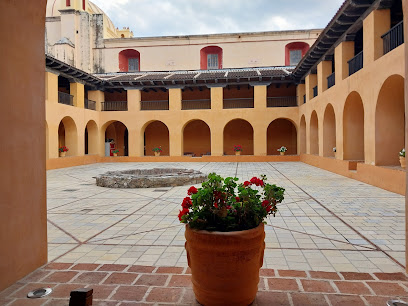
Iglesia de San Cristóbalito
Explore the tranquil charm of Iglesia de San Cristóbalito, a stunning Catholic church set in the scenic hills of San Cristóbal de las Casas, Chiapas.

Free Walking Tour San Cristobal de Las Casas
Unveil the treasures of San Cristobal de las Casas with a free walking tour through its vibrant streets and rich cultural tapestry.

Andador Turistico Miguel Hidalgo, San Cristobal de las Casas; Chiapas.
Discover the charm of Andador Turistico Miguel Hidalgo in San Cristobal de las Casas, a vibrant pedestrian street rich in history and local culture.

La Enseñanza, Casa de la Ciudad
Discover the rich cultural heritage of Chiapas at La Enseñanza, Casa de la Ciudad, a captivating museum in San Cristóbal de las Casas.

Casa Mazariegos Recinto Histórico
Discover the elegance of Casa Mazariegos, a historic venue in San Cristóbal de las Casas, perfect for conferences, weddings, and cultural events.

Unmissable attractions to see
Museo del Ámbar
Explore the mesmerizing world of amber at Museo del Ámbar in San Cristóbal de las Casas, where history and artistry come together in stunning displays.

Casa Na Bolom
Explore the cultural treasures of Casa Na Bolom, a vibrant center for Chiapas heritage in San Cristóbal de las Casas, Mexico.

Museo Mesoamericano del Jade
Explore the captivating world of jade and Mesoamerican culture at Museo Mesoamericano del Jade in San Cristóbal de las Casas.

Reserva Ecológica y Jardín de Orquídeas Moxviquil
Explore the lush landscapes and stunning orchid collections of Moxviquil Ecological Reserve in San Cristóbal de las Casas, a serene escape into nature.

Museo Jtatik Samuel
Explore the heart of Chiapas at Museo Jtatik Samuel, where indigenous culture and history come alive in a vibrant museum experience.

Parque Natural El Encuentro
Explore the lush landscapes and diverse wildlife of Parque Natural El Encuentro, a serene escape in San Cristóbal de las Casas, Chiapas.

Arches Park.
Explore the enchanting Arches Park in San Cristóbal de las Casas, a perfect blend of nature, culture, and relaxation in Chiapas.

Museo de los Altos de Chiapas Ex Convento de Santo Domingo
Explore the cultural heart of Chiapas at the Museo de los Altos de Chiapas Ex Convento de Santo Domingo, showcasing art, heritage, and indigenous traditions.

Andador Eclesiástico De San Cristóbal
Discover the vibrant Andador Eclesiástico De San Cristóbal, a cultural corridor filled with art, history, and authentic local experiences in San Cristóbal de las Casas.

Museo de Culturas Populares de Chiapas
Immerse yourself in the vibrant traditions of Chiapas at the Museo de Culturas Populares, a cultural gem in San Cristóbal de las Casas.

Casa De La Sirena
Explore Casa De La Sirena in San Cristóbal de las Casas, a historical landmark revealing the rich cultural heritage of Chiapas and its captivating architecture.

San Cristóbal
Explore the vibrant culture, stunning architecture, and breathtaking landscapes of San Cristóbal de las Casas, a gem in Chiapas, Mexico.

Essential places to dine
El Caldero
Experience authentic Mexican flavors at El Caldero in San Cristóbal de las Casas – where every meal tells a story.
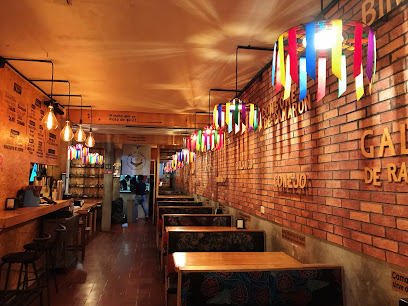
Restaurante La Lupe
Experience authentic Mexican cuisine at Restaurante La Lupe in San Cristóbal de las Casas - where every dish tells a story.
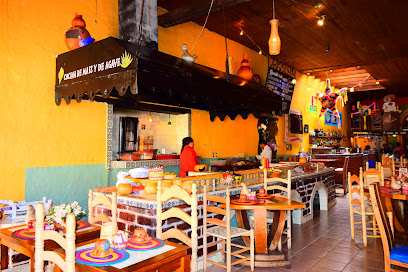
Restaurante Las Pichanchas (San Cristóbal)
Experience authentic Chiapas cuisine at Restaurante Las Pichanchas in San Cristóbal de las Casas – a feast for your senses.
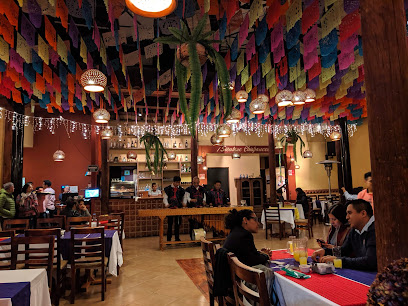
TierrAdentro Restaurante
Experience authentic Mexican cuisine in a cozy atmosphere at TierrAdentro Restaurante in San Cristóbal de las Casas.

Cocoliche
Discover Cocoliche in San Cristóbal de las Casas – where authentic Italian cuisine meets warm Chiapas hospitality.

Restaurante el Fogón de Jovel
Experience authentic Mexican cuisine at Restaurante el Fogón de Jovel in San Cristóbal de las Casas - A must-visit destination for food lovers!

Jardines de San Cristóbal
Experience authentic Mexican flavors amidst stunning gardens at Jardines de San Cristóbal in San Cristóbal de las Casas.

La Viña de Bacco
Experience exquisite tapas and fine wines at La Viña de Bacco in the heart of San Cristóbal de las Casas.
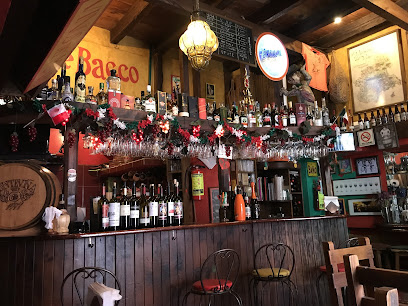
Santo Nahual
Discover the vibrant flavors of Mexico at Santo Nahual, where authentic cuisine meets warm hospitality in San Cristóbal de las Casas.
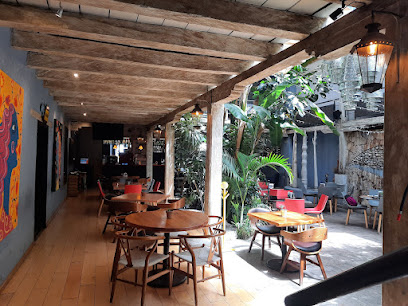
Restaurante Al Sazón Que Me Toquen...
Experience authentic Mexican cuisine at Restaurante Al Sazón Que Me Toquen – where every bite tells a story.
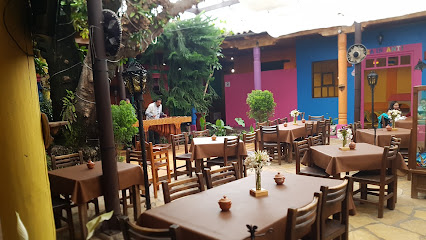
Restaurant Las Nubes Café
Experience authentic Chiapas flavors at Restaurant Las Nubes Café – your go-to spot for delicious meals and aromatic coffee in San Cristóbal de las Casas.

La Casa De Las Lolas
Discover authentic Mexican flavors at La Casa De Las Lolas in San Cristóbal de las Casas - your go-to spot for delicious meals and delightful baked goods.

Restaurante Sabor a mi
Experience authentic Mexican cuisine at Restaurante Sabor a mi in San Cristóbal de las Casas - where every dish tells a story.

Te Quiero Verde
Discover delicious vegan cuisine at Te Quiero Verde in San Cristóbal de las Casas—where flavor meets sustainability in every bite.

Achiote Cochinita Pibil
Discover authentic Mexican cuisine at Achiote Cochinita Pibil, home to delectable cochinita pibil tacos and more in San Cristóbal de las Casas.

Markets, malls and hidden boutiques
Liverpool Express
Explore Liverpool Express in San Cristóbal de las Casas for a unique shopping experience featuring clothing, electronics, and local treasures.

Na Casa Galería
Explore the vibrant textiles and handicrafts of Mexico at Na Casa Galería, a treasure trove of local artistry and tradition in San Cristóbal de las Casas.

Eklektik
Discover Eklektik in San Cristóbal: a vibrant store showcasing the rich culture and craftsmanship of Chiapas through unique textiles and handmade crafts.

Bat-Store San Cristobal
Explore Bat-Store San Cristobal for a distinctive shopping experience with unique clothing and accessories rooted in Chiapas culture.

Bad People / Ropa Vintage
Explore Bad People, a unique vintage clothing store in San Cristóbal de las Casas, where fashion meets local culture and sustainability.

Me Encanta Boutique
Explore the vibrant world of handcrafted treasures at Me Encanta Boutique in San Cristóbal de las Casas, where culture meets creativity.

Carmen Rion + Sna Maruch
Explore the vibrant world of Chiapas fashion at Carmen Rion + Sna Maruch, where tradition meets contemporary style in San Cristóbal de las Casas.

¡Ay Güey!
Explore the vibrant colors and unique designs of Chiapas at ¡Ay Güey!, a must-visit clothing store in San Cristóbal de las Casas.

Boutique Arte Sandía
Explore Boutique Arte Sandía for unique handicrafts and art that embody the vibrant spirit of Chiapas in San Cristóbal de las Casas.
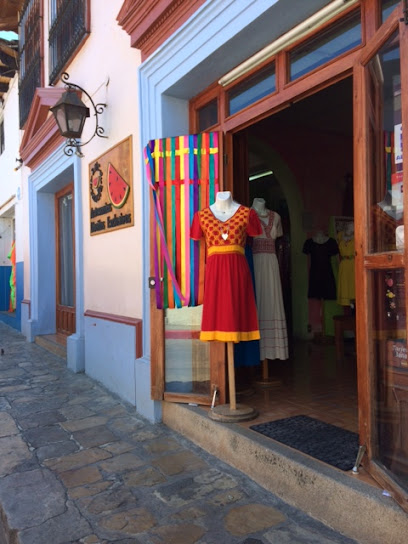
Boutique El Camino de los Altos
Explore Boutique El Camino de los Altos for unique artisanal crafts in San Cristóbal de las Casas, reflecting the rich culture of Chiapas.

Artesanias de los Altos de Chiapas
Discover the rich cultural heritage of Chiapas at Artesanias de los Altos de Chiapas, a treasure trove of traditional clothing and handmade crafts.

Boutique Guadalupe Narvaez de Ruíz
Explore Boutique Guadalupe Narvaez de Ruíz in San Cristóbal de las Casas for unique women's fashion that blends local culture with contemporary style.

Coruz Shop
Discover unique collectibles that embody the rich culture and artistry of Chiapas at Coruz Shop in San Cristóbal de las Casas.

artisan2you
Discover the heart of Chiapas at Artisan2you, where unique handicrafts and local artistry come together to create unforgettable souvenirs.

Mi Arcoiris Boutique
Explore the colorful world of Mi Arcoiris Boutique, where traditional Chiapas craftsmanship meets modern fashion in San Cristóbal de las Casas.

Essential bars & hidden hideouts
Café Bar 500 Noches
Discover the vibrant flavors of San Cristóbal de las Casas at Café Bar 500 Noches, where local cuisine meets a cozy atmosphere.

Baruva Food&Drinks
Experience the vibrant nightlife of San Cristóbal de las Casas at Baruva Food & Drinks, where great drinks and music come together in a lively atmosphere.

Mezcalito420
Discover the vibrant nightlife at Mezcalito420, a lively live music bar in San Cristóbal de las Casas, offering delicious tapas and unforgettable performances.

Clover Irish Pub
Discover Clover Irish Pub, where vibrant Irish culture meets the charm of San Cristóbal de las Casas, offering delicious food, drinks, and live music.

Posheria
Discover Posheria, a lively bar in San Cristóbal de las Casas, offering a vibrant atmosphere and a diverse selection of beverages to enjoy.

La Popu Mezcalería
Discover the flavors of Mexico at La Popu Mezcalería, a vibrant grill and bar in the heart of San Cristóbal de las Casas.

Bar y Restaurante El Rincón del Vino
Discover the vibrant flavors of San Cristóbal at El Rincón del Vino, where traditional grill meets exquisite tapas in a charming atmosphere.

Puro Mexicano Mezcalería
Experience the vibrant culture of San Cristóbal at Puro Mexicano Mezcalería, where mezcal meets live piano music in an inviting atmosphere.

Pipiripau
Discover the lively atmosphere of Pipiripau, a vibrant bar in San Cristóbal de las Casas offering craft cocktails and a taste of local nightlife.

Panóptico
Experience the vibrant flavors of Chiapas at Panóptico, a must-visit restaurant and bar in San Cristóbal de las Casas.

Ginger Lab
Discover a vibrant cocktail bar in San Cristóbal de las Casas, offering unique drinks and delicious pizza in a lively atmosphere.

Jack Rock Y Chela
Experience the vibrant nightlife at Jack Rock Y Chela, a must-visit bar in San Cristóbal de las Casas, known for its lively atmosphere and diverse drink selection.

Porter
Experience the vibrant nightlife at Porter, the premier bar in San Cristóbal de las Casas, offering artisanal drinks in a lively atmosphere.

mambo & mojito
Discover vibrant nightlife and refreshing cocktails at Mambo & Mojito, a must-visit bar in the heart of San Cristóbal de las Casas.

CALACA CASA DE MIXOLOGIA
Discover the vibrant flavors of Chiapas at Calaca Casa de Mixologia, where grill meets innovative mixology in a lively atmosphere.
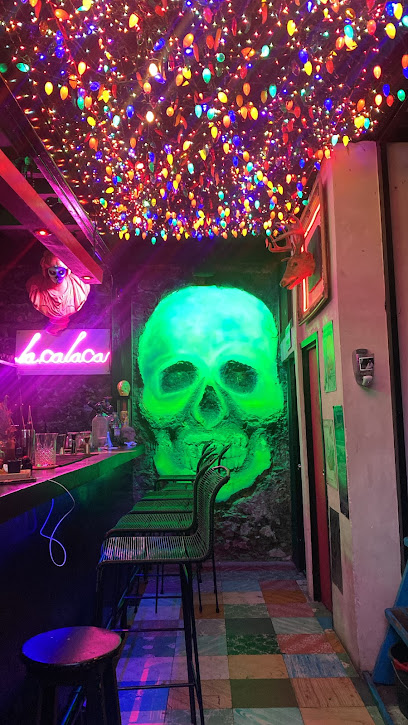
Local Phrases about San Cristobal de las Casas
-
- HelloHola
[oh-lah] - GoodbyeAdiós
[ah-dee-ohs] - YesSí
[see] - NoNo
[no] - Please/You're welcomePor favor/De nada
[por fah-vor/deh nah-dah] - Thank youGracias
[grah-see-ahs] - Excuse me/SorryPerdón/Lo siento
[pehr-dohn/loh see-ehn-toh] - How are you?¿Cómo estás?
[koh-moh ehs-tahs] - Fine. And you?Bien. ¿Y tú?
[byen. ee too] - Do you speak English?¿Hablas inglés?
[ah-blahs een-glehs] - I don't understandNo entiendo
[noh ehn-tee-ehn-doh]
- HelloHola
-
- I'd like to see the menu, pleaseMe gustaría ver el menú, por favor
[meh goo-stah-ree-ah vehr ehl meh-noo, por fah-vor] - I don't eat meatNo como carne
[noh koh-moh kahr-neh] - Cheers!¡Salud!
[sah-lood] - I would like to pay, pleaseMe gustaría pagar, por favor
[meh goo-stah-ree-ah pah-gahr, por fah-vor]
- I'd like to see the menu, pleaseMe gustaría ver el menú, por favor
-
- Help!¡Ayuda!
[ah-yoo-dah] - Go away!¡Vete!
[veh-teh] - Call the Police!¡Llama a la policía!
[yah-mah ah lah poh-lee-see-ah] - Call a doctor!¡Llama a un doctor!
[yah-mah ah oon dohk-tohr] - I'm lostEstoy perdido
[ehs-toy pehr-dee-doh] - I'm illEstoy enfermo
[ehs-toy ehn-fehr-moh]
- Help!¡Ayuda!
-
- I'd like to buy...Me gustaría comprar...
[meh goo-stah-ree-ah kohm-prahr] - I'm just lookingSólo estoy mirando
[soh-loh ehs-toy mee-rahn-doh] - How much is it?¿Cuánto cuesta?
[kwahn-toh kwehs-tah] - That's too expensiveEso es muy caro
[eh-soh ehs moo-ee kah-roh] - Can you lower the price?¿Puedes bajar el precio?
[pweh-dehs bah-hahr ehl pree-syoh]
- I'd like to buy...Me gustaría comprar...
-
- What time is it?¿Qué hora es?
[keh oh-rah ehs] - It's one o'clockEs la una
[ehs lah oo-nah] - Half past (10)Media (10)
[meh-dee-ah (dheez)] - MorningMañana
[mah-nyah-nah] - AfternoonTarde
[tahr-deh] - EveningNoche
[noh-cheh] - YesterdayAyer
[ah-yehr] - TodayHoy
[oy] - TomorrowMañana
[mah-nyah-nah] - 1Uno
[oo-noh] - 2Dos
[dohs] - 3Tres
[trehs] - 4Cuatro
[kwah-troh] - 5Cinco
[seen-koh] - 6Seis
[seys] - 7Siete
[syeh-teh] - 8Ocho
[oh-choh] - 9Nueve
[nweh-veh] - 10Diez
[dyehs]
- What time is it?¿Qué hora es?
-
- Where's a/the...?¿Dónde está...?
[dohn-deh ehs-tah] - What's the address?¿Cuál es la dirección?
[kwahl ehs lah dee-rehk-syohn] - Can you show me (on the map)?¿Puedes mostrarme (en el mapa)?
[pweh-dehs mohs-trar-meh (ehn ehl mah-pah)] - When's the next (bus)?¿Cuándo es el próximo (autobús)?
[kwan-doh ehs ehl proh-ksee-moh (ow-toh-boos)] - A ticket (to ....)Un boleto (a ....)
[oon boh-leh-toh (ah)]
- Where's a/the...?¿Dónde está...?
History of San Cristobal de las Casas
-
San Cristóbal de las Casas was founded in 1528 by Spanish conquistadors under the leadership of Diego de Mazariegos. Initially named Villa Real de Chiapa, it was intended to serve as a stronghold for Spanish settlers amidst the indigenous Tzotzil and Tzeltal populations. The city quickly became a focal point for colonial administration and missionary activities.
-
The city was renamed in honor of Bartolomé de las Casas, a Spanish Dominican friar who became the first Bishop of Chiapas. He was a staunch advocate for the rights of indigenous people, documenting their suffering under Spanish rule and lobbying for new laws to protect them. His efforts led to the introduction of the New Laws in 1542, aimed at ending the exploitation of indigenous labor.
-
During the colonial period, San Cristóbal de las Casas developed a distinctive architectural style characterized by its baroque and neoclassical buildings. The city's layout was designed according to typical Spanish colonial urban planning, featuring a central plaza surrounded by important civic and religious buildings. Notable structures from this period include the Cathedral of San Cristóbal, Santo Domingo Church, and the Rosario Chapel.
-
Throughout its history, San Cristóbal de las Casas has been the epicenter of various indigenous uprisings. One of the most significant was the Tzeltal Rebellion of 1712, where indigenous people rose against Spanish colonial authorities due to oppressive labor demands and religious persecution. Although the rebellion was eventually quashed, it highlighted the ongoing tensions between the indigenous population and colonial powers.
-
In more recent history, San Cristóbal de las Casas gained international attention as the site of the 1994 Zapatista uprising. On January 1st, 1994, the Zapatista Army of National Liberation (EZLN), composed largely of indigenous people, occupied the city as part of a broader rebellion against the Mexican government. They demanded land reform, indigenous rights, and greater autonomy. The uprising brought global attention to the issues faced by indigenous communities in Chiapas and has left a lasting impact on the region.
-
San Cristóbal de las Casas is a vibrant cultural hub renowned for its rich indigenous traditions, arts, and crafts. The city hosts numerous festivals throughout the year, such as the Fiesta de San Cristóbal in July, which celebrates the city's patron saint. Another major event is the Festival Cervantino Barroco, a cultural festival that showcases music, dance, theater, and art, drawing visitors from all over Mexico and beyond.
San Cristobal de las Casas Essentials
-
San Cristobal de las Casas is located in the Chiapas highlands of southern Mexico. The nearest major airport is Ángel Albino Corzo International Airport (TGZ) in Tuxtla Gutiérrez, about 80 kilometers away. From the airport, you can take a taxi or a shuttle service directly to San Cristobal. Alternatively, long-distance buses from major Mexican cities like Mexico City and Oaxaca also service San Cristobal de las Casas.
-
San Cristobal de las Casas is a pedestrian-friendly city with many attractions within walking distance. For longer distances, taxis are readily available and reasonably priced. Colectivos (shared vans) are a common and economical form of public transport, connecting different parts of the city and surrounding areas. Bicycles can also be rented for a more eco-friendly way to explore the city.
-
The official currency in Mexico is the Mexican Peso (MXN). Credit and debit cards are widely accepted in hotels, restaurants, and larger shops. However, it is advisable to carry cash, especially when visiting markets and smaller establishments. ATMs are available throughout the city, but it's a good idea to withdraw cash in advance to avoid any inconvenience.
-
San Cristobal de las Casas is generally safe for tourists, but it's important to take standard precautions. Avoid walking alone at night in poorly lit areas or unfamiliar neighborhoods. The markets and tourist areas can be crowded, so keep an eye on your belongings to avoid pickpocketing. Some neighborhoods, such as the outskirts of the city, have higher crime rates, so it's best to stay in the central, well-populated areas.
-
In case of emergencies, dial 911 for immediate assistance. The local police station and medical facilities are available in San Cristobal de las Casas. It is highly recommended to have travel insurance that covers medical emergencies. Pharmacies are common and offer over-the-counter medications for minor health issues. For serious medical conditions, the city's hospitals and clinics are well-equipped.
-
Fashion: Do dress modestly, especially when visiting religious sites. Avoid wearing overly revealing clothing. Religion: Do respect local customs and traditions. When entering churches, be quiet and refrain from taking flash photography. Public Transport: Do be respectful and give up your seat to elderly passengers. Don’t eat or drink on public transport. Greetings: Do greet people with a friendly 'Hola' or 'Buenos días'. A handshake is common for formal greetings. Eating & Drinking: Do try local delicacies and accept food offerings graciously. Don’t drink tap water; always opt for bottled water.
-
To experience San Cristobal de las Casas like a local, visit the vibrant markets such as Mercado de Santo Domingo, where you can purchase local crafts and fresh produce. Engage with the locals; they are often friendly and willing to share stories about their culture and history. Don't miss the traditional Chiapas cuisine, especially tamales and pozol. For a unique experience, attend a traditional Mayan ceremony or participate in local festivals.
Trending Landmarks in San Cristobal de las Casas
-
Catedral de San Cristóbal de las Casas
-
Museo del Ámbar
-
El Arcotete
-
Parque Ecoturístico Rancho Nuevo
-
Casa Na Bolom
-
Museo Mesoamericano del Jade
-
Grutas Del Mamut
-
Reserva Ecológica y Jardín de Orquídeas Moxviquil
-
Arco del Carmen
-
Centro de Textiles del Mundo Maya
-
Iglesia de San Cristóbalito
-
Free Walking Tour San Cristobal de Las Casas
-
Andador Turistico Miguel Hidalgo, San Cristobal de las Casas; Chiapas.
-
La Enseñanza, Casa de la Ciudad
-
Casa Mazariegos Recinto Histórico
Nearby Cities to San Cristobal de las Casas
-
Things To Do in Quetzaltenango
-
Things To Do in Chichicastenango
-
Things To Do in Panajachel
-
Things To Do in Lake Atitlán
-
Things To Do in Flores
-
Things To Do in Antigua Guatemala
-
Things To Do in Tikal
-
Things To Do in Guatemala City
-
Things To Do in San Ignacio
-
Things To Do in Campeche
-
Things To Do in Punta Gorda
-
Things To Do in Rio Dulce
-
Things To Do in Livingston
-
Things To Do in Copán Ruinas
-
Things To Do in Oaxaca









